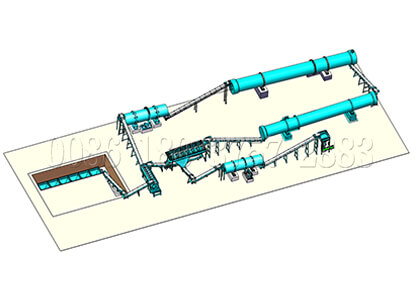Composting Cow Manure Turns It In To A Good Organic Fertilizer That Benefits Plants
Cow dung or cattle manure is commonly used in numerous rural areas as fertilizer for agricultural produce. It really is a fertilizer that is certainly not very abundant in nitrogen, along with the high ammonia levels inside it can burn plants when the manure is fresh when it is applied. When the same manure is composted, it might be the sort of fertilizer that is certainly helpful to plants.
Most cattle manure is comprised of grain and digested grass. It is actually abundant in nutrients and possesses a very high content of organic materials. Considering its percentage of vital elements, it provides 3 percent of nitrogen, 2 percent of phosphorus, and simply a percent of potassium. Besides this, its content has several potentially dangerous pathogens along with high levels of ammonia. This is the main reason why the manure should be aged prior to it being used as fertilizer.
When you compost cow manure you can get rid of the ammonia from it plus assistance to remove ammonia gas which can be harmful and weeds and seeds that are thing about this manure, and also any dangerous pathogens like E.coli. The high content of organic matter that cow manure has, is included with the soil and may assistance in greatly improving its capacity to hold and retain moisture. This, consequently, minimizes the quantity of water that plants fertilized using this type of composted cow manure will need. It also helps in improving the aeration within the soil, and split up soil which has been compacted. Composted cow manure could have beneficial bacteria, that convert easily into nutrients which are easily accessed and release gradually, in order that plant roots which are tender will not get burnt.
To compost cow dung a spot where one can build a pile that is a minimum of 3 to 4 feet high, must be chosen. A 3-inch layer of dry organic material must first be spread from the chosen area. This has to be engrossed in a 2-inch layer of cow manure. This layering has to be continued before the pile is about four feet in height. The pile has to be watered and kept damp as you may construct it up and whenever the preferred height is reached it needs to be covered with a layer of soil.
The pile created should be turned over once every three days as well as its moistness maintained, without making the mass soggy. When you are turning on the pile, check its temperature at its center. It will be between 120 to 160 degrees Fahrenheit. The compost heap will gradually turn brown and may provide an earthy smell. At this time, you will find no heat produced at its center, and that means the compost is ready to be used.
When the compost pile is not going to warm, it means it has a smaller amount of manure and this has to be added. Excessive manure will make your pile stop trying an unpleasant and powerful odor. Increase the amount of of organic material.
It may always assist to create compost in the bin as it helps to contain the compost. Ensure that your compost pile is not any more heating up prior to using it on your plants.

No comments:
Post a Comment